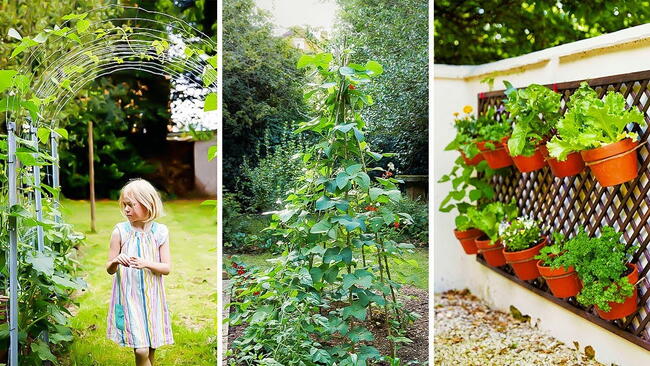Which Vegetables and Fruit Grow Best in Hanging Baskets
Many vegetables are suitable for growing in hanging baskets. Here’s how to plant your own hanging basket—with delicious fresh food!
Use a basket that’s at least 14 inches in diameter and will hold at least a gallon of potting soil. This basket will be slower to dry out than smaller baskets, but it will be very heavy, so make sure that your hanging basket’s supports are strong enough.
Which vegetables and fruit grow well in hanging baskets? Consider strawberries, cherry tomatoes, lettuce, herbs, and more!
A 14-inch basket will hold three strawberry plants, two cherry tomatoes along with French marigolds or basil as companions, two to three chilies, or up to five leafy herbs. Alternatively, sow cut-and-come-again salad seeds over the surface, then cover with a thin layer of potting soil.
Our Garden Planner makes it easy to add hanging baskets to your garden plan. Click on the selection bar drop-down menu and choose Garden Objects from the list. Select a basket and place it where you want it to be. Adjust the dimensions using the corner ‘handles’. When you’ve added the plants you want to grow to your basket, you can edit the default spacing to pack more plants in.
How to Plant a Hanging Basket
Place the basket into a bucket that’s slightly smaller than the basket to stop it from rocking about while you work on it.
Use an old potting soil bag as a liner for a wire basket. Cut the potting soil bag a little bigger than you need, then place it in the basket so that the black inner is facing out.
Poke some holes into the liner for drainage, but don’t pierce the bottom – it will collect water, making it slower to dry out.
Mix a quality multi-purpose potting soil with a handful of slow-release fertilizer, and add a couple of handfuls of well-rotted leaf mold if you have it to improve water retention.
Fill your basket most of the way with the potting soil mix.
Remove the plants from their pots and space them out equally in the basket.
Fill in around rootballs, firming in the potting soil with your fingertips as you go. The final level of the potting soil should be an inch below the rim of the basket.
Cut away any excess liner for a neat edge.
Hang the basket up and give it a thorough watering.
Water your baskets as soon as they start to dry out—twice a day may be necessary in hot weather. When the slow-release fertilizer is exhausted, water with a liquid feed every week to keep your plants producing fruits or leaves.
See our Plant Growing Guides for more information on growing popular vegetables and fruit.
ADVERTISEMENT
What varieties of cherry tomatoes and peppers would you plant in hanging baskets?
When Fall and then Winter arrives, is there a way to keep these hanging baskets overwinter so the produce starts growing again in the Spring without bringing them into a house or does one just plant fresh every year?
Hi Judie, It depends on what’s being grown and how harsh your climate is. For hardy perennials such as strawberries, they can either be left hanging up in the baskets over winter, or placed in a cold frame or greenhouse to fend off the worst of the weather. For annual crops such as beans or lettuce, they’ll need to be planted fresh each year.
I noticed you didn't recommend the "Horsehair" liners that are sold to retain moisture in the hanging baskets. Any particular reason other than cost ?
You can use any liner you wish, but a used potting soil bag is free and will retain moisture very well.









